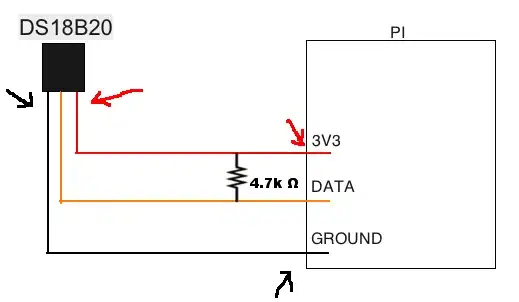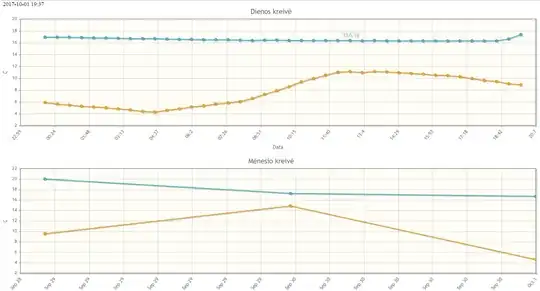I have a raspberry pi connected to a DS18B20 temperature sensor shown in the diagram below. The one-wire software is installed and I am able to successfully read the temperature from the devices folder/file in /sys/bus/w1/devices.
The problem I am having occurs when using much longer wire (15ft) to connect all three (ground, data, and vcc) wires from the sensor to the pi. The DS18B20 is no longer readable, there is no folder named with the serial number in the /sys/bus/w1/devices directory now. I thought I may be losing voltage due to the longer length of the wires but using a mutli-meter I am getting a 3.28V reading at the locations marked with the arrows in the next picture.
I am a novice and looking for help trouble shooting the issue and clarification of any apparent misconceptions I have.


